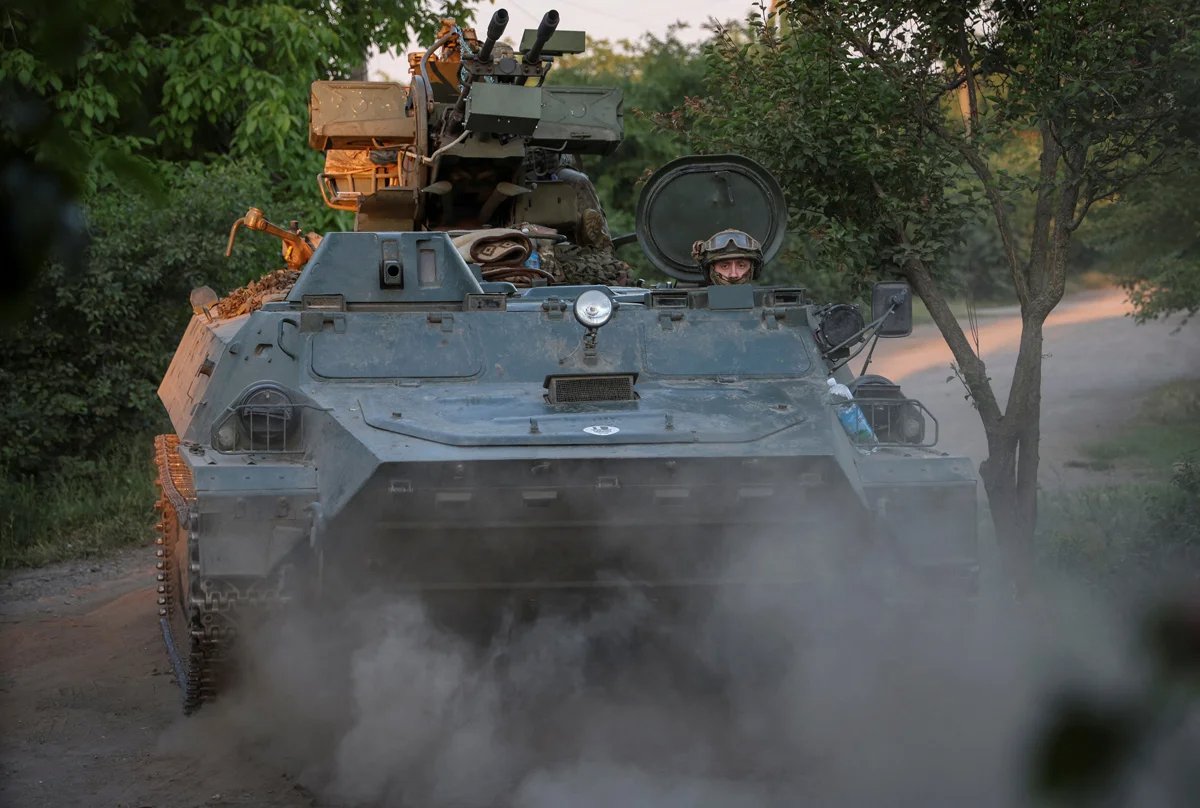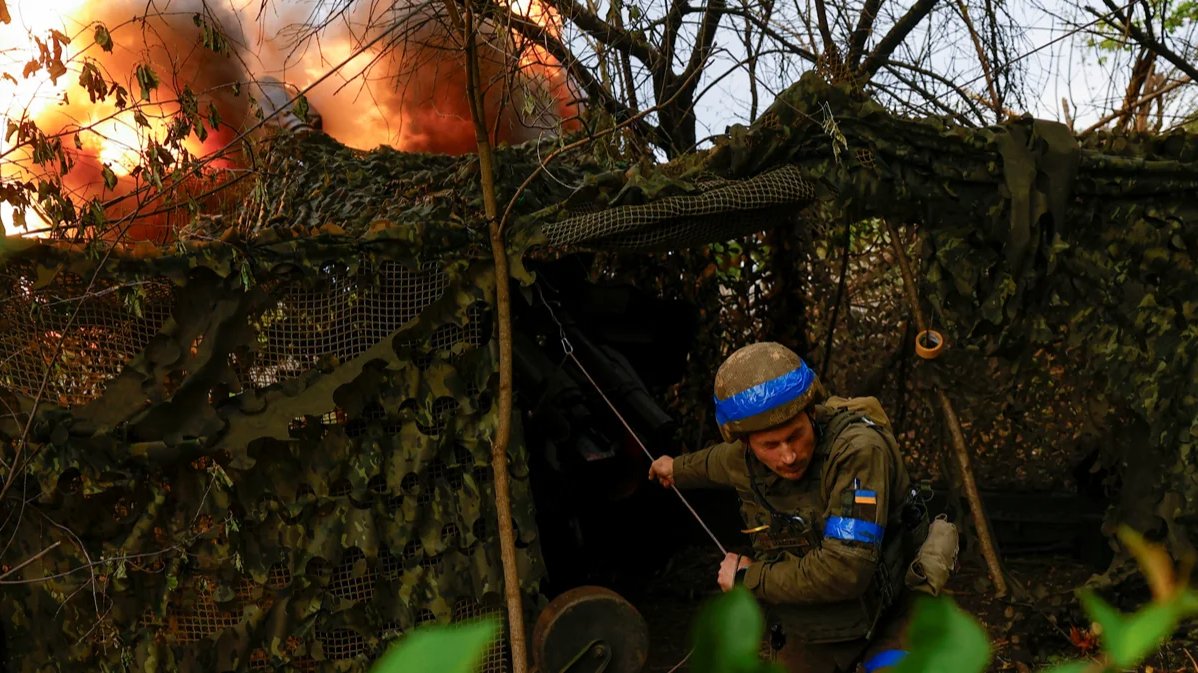Despite pledges of military aid from Western allies, Ukraine is struggling to halt Russian advances. Clashes in the Donetsk and Zaporizhzhia regions combined with the pressure of a new front in the Kharkiv region have resulted in Kyiv scrambling to keep the entire frontline covered and resist further Russian incursions.
A distraction technique
On 10 May, Russian troops crossed into Ukraine’s Kharkiv region, which borders Russia, rapidly making significant gains. Just days later, Russian forces stormed the town of Vovchansk and captured 10 other settlements located near the border.
Despite global intelligence agencies, experts and journalists all warning Ukraine of an imminent attack by Russian forces, a notable lack of defensive measures allowed the Russian military to enter Ukrainian territory virtually unhindered, with some battalions advancing as far as 8 km within days.
Opening up a new front put pressure on the Armed Forces of Ukraine (AFU), forcing it to redeploy troops to defend a widened frontline. “Their objective was to expand the frontline in order to tie up AFU units, forcing Ukraine to deploy reserves, and transfer additional units from other parts of the front,” military expert and AFU reserve colonel Roman Svitan told Novaya Europe.
According to Svitan, the Russian military has concentrated some 50,000-70,000 military reservists near the occupied Ukrainian cities of Donetsk and Volnovakha. While their primary function is to defend Russian-held territory in Donbas in the event of an AFU attack on the region, Svitan said there was still a small chance they could be transferred to the Belgorod region and deployed to join Russia’s offensive in the Kharkiv region, where they could pose a substantial threat to Ukrainian defences.
“In recent days, the Russians have made virtually no progress in the Kharkiv region,” Israeli military analyst David Sharp told Novaya Europe. “Rather we’ve seen a stabilisation. Despite the significant successes of the first days of the offensive, Moscow did not commit a large number of troops. From this we can conclude that the offensive was intentionally local and aimed at distracting the AFU.”
The tactic appears to have been successful in drawing Ukrainian soldiers to the new Kharkiv front — some eight brigades, or approximately 20,000 men, according to Svitan. But it seems likely that Moscow will now target other fronts.
“To repel Russian attacks and launch a counteroffensive, the AFU would require a significant advantage in manpower, equipment and ammunition. But, judging by available sources, the Ukrainian army does not have that at the moment.”
“Today we see significant efforts by the Russians on other parts of the frontline. In Donetsk, the army is pushing along a 30–40-kilometre front between Marinka and Avdiivka. Same as on the approaches to the city of Chasiv Yar; in the area around the village of Robotyne in the Zaporizhzhia region; in the area around Kupiansk etc. And every day the Russians advance 200, 300, and sometimes even 500 metres.”
While Russian pressure is being applied from all directions, the battle is bloodiest around the city of Pokrovsk, where the Russians carry out dozens of attacks every day around the settlements of Karlivka and Kurakhove, Svitan added.
Until military aid arrives
A Russian military expert, who agreed to speak to Novaya Europe on the condition of anonymity, predicted that the Russian army would successfully continue its offensive in the near future: “The Russians have complete superiority in manpower, aviation, artillery, tanks and other equipment on the line of contact.”
Meanwhile, the AFU are dependent on Western weapons and ammunition, and are lacking in military personnel in particular. Despite Ukraine’s May mobilisation decree, new personnel will need to be trained before they can be sent to reinforce the frontline. And as Ukraine waits for delivery of the promised F-16 fighter jets to combat Russian airstrikes, Russia will continue to accumulate forces in Belgorod in preparation for an attack on Kharkiv.
Sharp notes that clashes are continuously occurring in many areas along the front, and that control of some neighbourhoods of the Donetsk region town of Krasnohorivka has passed back and forth between Russian and Ukraine several times. Yet, the Russians are no longer in a position to make the same sweeping advances they did around the village of Ocheretyne in early May.

Armoured AFU personnel carrier near the city of Bakhmut, Ukraine, 23 May 2024. Photo: Alexander Ratushnyak / Reuters / Scanpix / LETA
“These are bloody battles,” says Sharp. “And, apparently, the attacking side is suffering heavy losses. Nonetheless, the Russian military is moving rapidly and occupying more and more Ukrainian territory. To repel Russian attacks and launch a counteroffensive, the AFU would require a significant advantage in manpower, equipment and ammunition. But, judging by available sources, the Ukrainian army does not have that at the moment.”
Svitan is convinced that the AFU will be able to stop the Russian advance once they have Western military equipment. But Russian strikes on Ukrainian warehouses means it is impossible to expedite weapon delivery. If Ukraine finds itself experiencing a “weapons drought”, Svitan added that it would take several weeks for its battalions to replenish its equipment. In that scenario, the Russians would continue to attack and use the pause forced on the AFU to their advantage.
Svitan said he thought there was no point in viewing the incursion into Kharkiv as any kind of turning point. “For now, Western supplies to Kyiv are only sufficient for the country to defend itself. Despite losses, Russia is continuing its advance. But the pace of this movement is slow. Even in the event of the fall of Chasiv Yar or the encirclement of Pokrovsk, we are not talking about the capture, for example, of the entire Donetsk region. Russia is still very far from that.”

